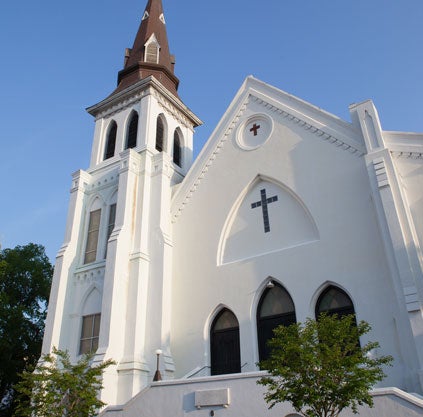On the evening of June 17, 2015, terror came to the Holy City. That terror found its way to a Bible study in the basement of Emanuel A.M.E. Church on Calhoun Street, just a few blocks from the College of Charleston. When that terror left, nine people had been shot dead.
As helicopters flew over Charleston through the night and a manhunt across the Carolinas began, news leaked out that there had been a crime at the church known as Mother Emanuel. Yet not until the next morning did the police and mayor announce details of the shooting, revealing it to be one of the more ghastly attacks in American history, on par with the slaughter of first-graders and teachers in Connecticut, the massacre of moviegoers in Colorado, the slaying of college students in Virginia, and so on. Charleston, and the rest of the world, was stunned … appalled … heartbroken.
Yet as tears fell and hearts hung heavy across Charleston, something remarkable happened: healing. Immediate healing. Healing inspired by the grace of those hurt most by this terrible event: the relatives of the shooting victims and members of the A.M.E. church. Rather than react in anger, they preached unity, love and even, incredibly, forgiveness.
In the days and weeks that followed, Charleston experienced more of the remarkable. The Confederate flag, embraced by the alleged killer as a symbol of hate, was removed from the grounds of the South Carolina Statehouse through an act of the state legislature. The president of the United States visited the College to deliver a eulogy for the slain Rev. Clementa Pinckney, using the makeshift pulpit in TD Arena to honor the fallen but also to address perennial problems in our country, including racism and gun violence.
Perhaps most impressively, people gathered in Charleston to pay tribute to the dead and to refute the racist beliefs of a killer. Through emotional vigils, funerals and demonstrations across the city, one message was clear: In Charleston, it is love, respect and hope that transcend all.
In the following stories (Storybook Life and Amazing Grace), we document one of Charleston’s darkest moments and how its residents, including members of the College of Charleston community, responded with nothing short of amazing grace.




